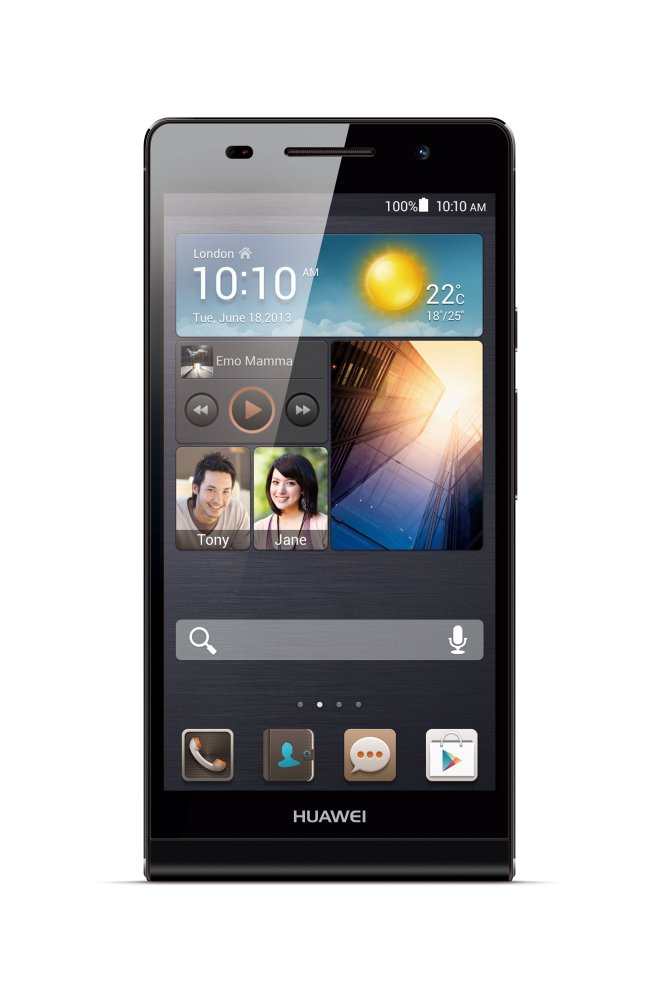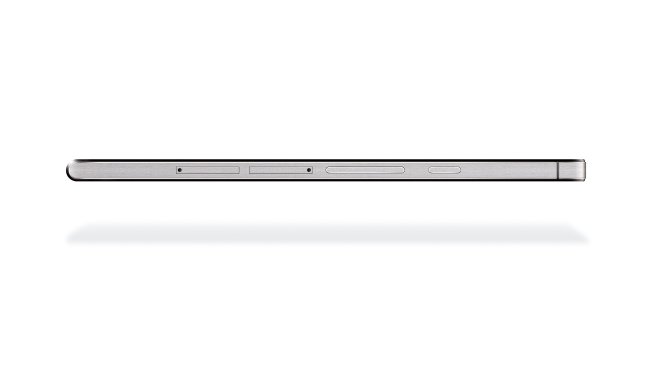While I can’t verify that the Huawei Ascend P6 is the world’s slimmest smartphone as its makers claim, the device marks a definitive step in the direction of style and luxury among Asian device makers and should rightfully displace its polycarbonate-clad rivals into the same fashion league as polyester.
People like to be made a fuss of. Apple knows this. It knows materials matter. Until Samsung came out with the Galaxy S4 with its combination of metal and glass, I actually couldn’t take its plasticky predecessors as seriously as I did the iPhone 4 and the iPhone 5. When the Galaxy S4 came along, I know the penny had dropped in Seoul, people like to be made a fuss of.
Nokia seems to have learnt this lesson too. The polycarbonate spree of yellow and red devices thankfully halted for a while with the magnificent Lumia 925 with its lightweight aluminum body. In fairness to HTC, when it arrived with the HTC One it had figured out a lot of the wireless interference issues with metal and produced a knock-out device.
So I guess I like my bling and I like to feel manufacturers are making an effort.
Aside from Samsung and Sony, Asian device makers have yet to make a big splash in terms of transforming the smartphone market – but that is already underway.
In its financial results this week Lenovo revealed that it is selling more mobile devices than PCs and is now one of the world’s biggest smartphone suppliers. Keep a close eye on players like Huawei and ZTE, they also have world domination in their sights.
A return to style and form

The Huawei Ascend P6 marks a move beyond cheap and cheerful Android devices towards elegant and sophisticated Android devices.
Measuring 6.18mm in thickness, Huawei claims this is the world’s slimmest smartphone. The device has a 4.7-inch high definition display and comes with an Android Jelly Bean 4.2.2 operating system.
The phone has a really decent 8-megapixel rear-facing camera and a extremely decent 5-megapixel front-facing camera, ideal for those of you who like taking “selfies.” I was particularly impressed with the quality of the display on its 1280×720 in-cell LCD screen.
The P6 is capable of full HD 1080P video recording and playback.
The slimness of the device is matched by its lightness at just 120 grams. Apparently it comes with an innovative circuit board inside that is one of the slimmest and narrowest in the industry and desgined to fit inside the 6.18mm handset.
In terms of electronics the device is powered by a 1/5GHz Quad Core processor and has 2GB of RAM, 8GB of ROM and has a slot for a microSD card of up to 32GB.
The phone also comes with ADRX battery optimization and power saving technology that can improve battery performance by 30pc compared with phones of a similar size.
Verdict

Outside and in, the Huawei Ascend P6 is a winner. The hardware specs combined with Android Jelly Bean OS work magnificently to provide a fast, smooth experience.
One of the key things about the device is that it lends itself well to personalization and has a wide range of customizable options.
The camera also comes with some interesting features such as the ImageSmart software that has auto-scene recognition, object tracing focus and – I kid you not – an instant facial beauty feature that basically enhances a photo between 1 and 10 to make a person appear more beautiful (it’s all lights and trickery of course, but it does do wonders for one’s complexion).
I have to say I’m impressed with the performance of the P6 and have no real gripes. Definitely the winning factor was the battery and I probably got away with charging it at least twice a week, unlike other big brand name devices that need to be charged daily.
I think both Apple and Samsung need to be aware that there is a new kid on the block.
· The Huawei Ascend P6 is available exclusively on the O2 network during August. It is priced from free on billpay and for €329.99 on prepay